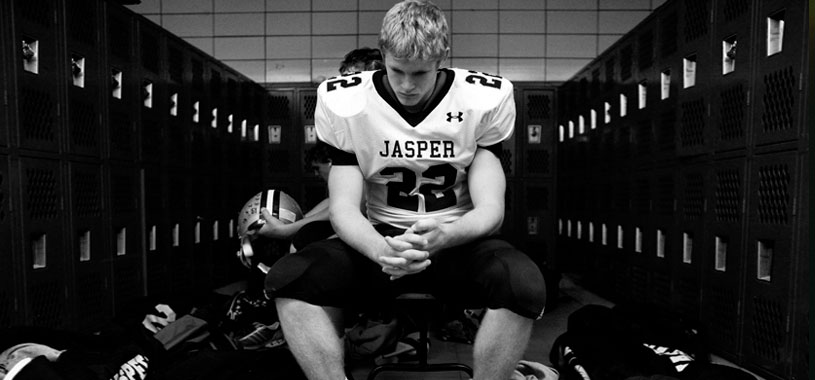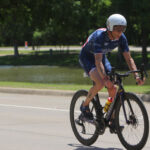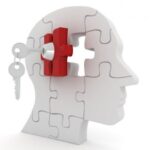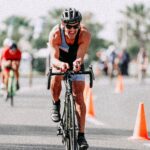Perhaps the most frustrating aspect of the cancellation of winter and spring sports is that you (and every other athlete in North America and probably the world) are no longer able to practice and compete in the sport they love and to continue to improve and progress toward your athletic goals. Well, I can’t magically manufacture sport training opportunities for you. But I can offer you a powerful way to continue to develop yourself athletically, including technically, tactically, and mentally, away from your field of play. What is this amazing strategy? Mental imagery, of course.
You may scoff at the idea that picturing yourself performing your sport in my mind’s eye can have any benefit to you, but I can assure you, from both personal athletic experience and professional study and use with some of the world’s best athletes, that it really works. And, heck, since you’re just hanging out at home so much now, doing remote schooling and unable to go to the gym, what’s the harm in seeing for yourself whether it works?
The World’s Best Athletes Use Mental Imagery
One of the most indelible memories I took away from the 2018 Winter Olympics was watching athletes in just about every sport before they competed. Time after time, we saw the best in their sport with their head down and eyes closed, moving their hands and their bodies. What were they doing? Well, mental imagery, of course. They were using the power of seeing and feeling themselves compete before they actually competed to help them get as prepared as they could be mentally to perform their best in the biggest event of their lives.
But don’t be fooled into thinking that these remarkable athletes just do mental imagery before big competitions. In fact, they use it all year round, both on and off the practice field. Why? Because they know they can benefit in so many ways—mentally, technically, and tactically—from seeing and feeling themselves performinv thousands of times without having to actually be in their sport. Simply by reproducing how they want to perform in their mind’s eye.
Keys to Quality Mental Imagery
So, with last season abruptly ended and now in your rear-view mirror and next season just underway (earlier than usual), now is the ideal time to commit to a mental imagery program and make big gains in your training and competitive preparations as you look to next season.
But, just like physical conditioning, mental imagery won’t work if you only do it every once in a while or inconsistently. You have to approach your imagery the same way you approach your conditioning; you should have a structured imagery program that you do consistently. Think of mental imagery as strength training for the mind; you want to strengthen your mental “muscles” including motivation, confidence, intensity, focus, and emotions. And mental imagery is the most powerful mental “exercise” you can do to get your mind as strong as your body.
There are five factors that impact the quality of mental imagery: perspective, control, multiple sense, speed, and total reproduction. You can develop each of these areas so you can get the most out of your imagery.
Imagery perspective. Imagery perspective refers to where the “imagery camera” is when you do imagery. The internal perspective involves seeing yourself from inside your body looking out, as if you were actually performing. The external perspective involves seeing yourself from outside your body like on video. Research indicates that one perspective is not better than the other. Most people have a dominant perspective with which they’re most comfortable. Use the perspective that’s most natural for you and then experiment with the other perspective to see if it helps you in a different way.
Control. Have you ever been doing imagery and you keep making mistakes in your imagined performances? This problem relates to imagery control, which is how well you’re able to imagine what you want to imagine. It’s not uncommon for athletes to perform poorly in their imagery and it often reflects a fundamental lack of confidence in your ability to perform their best. If mistakes occur in your imagery, you shouldn’t just let them go by. If you do, you’ll further ingrain the negative image and feeling which will hurt your efforts. Instead, when you make mistakes in your imagery, immediately rewind the “imagery video” and edit it and rerun the imagery video until you get it right.
Multiple senses. Good imagery is more than just visual, that’s why I don’t like to call it visualization. The best imagery involves the multi-sensory reproduction of the actual sport experience. You should duplicate the sights, sounds, physical sensations, thoughts, and emotions that you would experience in an actual training or competitive situation. Visual imagery involves how clearly you see yourself performing. Vivid auditory images are important because the sound of yourself performing are an important part of your athletic experience. Emotionally, if you get nervous before a real competition, you should get nervous in your imagery.
The most powerful part of mental imagery is feeling it in your body. That’s how you really ingrain new technical and mental skills and habits. A useful way to increase the feeling in your imagery is to combine imagined and real sensations. Imagine yourself performing and move your body with the imagined performance.
Speed. The ability to adjust the speed of your imagery will enable you to use imagery to improve different aspects of your sport. Slow motion is effective for focusing on technique. When you first start to work on technique in your imagery, slow the imagery video down, frame by frame if necessary, to see yourself executing the skill correctly. Then, as you see and feel yourself performing well in slow motion, increase the speed of your imagery until you can perform well at “real-time” speed.
Total reproduction. For you to get the most out of your imagery, you want to do everything you can to create a total reproduction of your actual sport experience. Everything that you think and feel (both physically and emotional feelings), every sense you experience, you want to reproduce in your imagery. In other words, you want to make your imagery as real as possible.
Be Realistic in Your Imagery
Imagine realistic conditions. Imagine yourself performing under realistic conditions, in other words, always do imagery under those conditions in which you normally train and compete. That is, if you often compete in difficult conditions (e.g., cold, heat, rain), imagine yourself on in those tough conditions.
Imagine realistic performances. If you’re a young athlete, don’t imagine yourself performing like a pro. Instead, imagine yourself the way you normally perform, but incorporate positive changes into your efforts that you are working on.
Develop An Off-sport Imagery Program
The key to effective mental imagery is consistency. You wouldn’t expect to get stronger by lifting weights once every few weeks. You wouldn’t expect to get better technically by training once in a while. The same holds true for mental imagery. The only way to gain the benefits of mental imagery is to use it frequently.
Set imagery goals. Set specific goals for what areas you want to work on. For example, you might focus on some technical change, being more relaxed and focused, or just performing consistently well with few mistakes.
Climb imagery ladder. Create a ladder of training and competitions scenarios in which you will be performing in the upcoming season. The ladder should start with training in simple conditions and progress to more demanding training situations, simulated competitions, less important events, and increase through more important competitions up to the most important in which you’ll compete next year.
Then, begin your imagery on the lowest level of the imagery ladder. Stay at that rung until you reach your imagery goal. When that is achieved, stay at that step for several imagery sessions to really reinforce and ingrain the positive images, thoughts, and feelings. Then work your way up the ladder until you’re performing the way you want in your imagery at the very top of the imagery ladder in the biggest competition of the season.
Training- and event-specific imagery. Select training and competitive situations that are appropriate for your level of development. In other words, if you’re a high school athlete, don’t imagine yourself competing in the Olympics. Always imagine yourself performing at a specific venue in a particular event. Then select a different training or competitive venue for each imagery session, thus reaching their imagery goals in a diverse array of venues, conditions, and competitions.
Imagery sessions. Imagery sessions should be done 3-4 times per week. Set aside a specific time of the day when you’ll do your imagery (just like you do for your physical training) and program alerts in your smartphone as reminders. Find a quiet, comfortable place where you won’t be disturbed. Each session should last about 10 minutes.
Imagery log. One difficulty with imagery is that, unlike physical training, the results aren’t tangible. An effective way to deal with this problem is to keep an imagery log. A log should record key aspects of every imagery session including the quality of the imagined performance, any thoughts and feelings that occur (positive or negative), problems that emerged, what you did well in your imagery, and what you need to work on for the next session. An imagery log enables you to see progress in your imagery, thereby making it more rewarding and motivating you to want to continue to do it. I include an imagery log in my mental imagery workbook that you can download and print out.
Accept the Challenge
So, here’s the deal. I can’t guarantee that you’ll make up for all of the lost training time caused by the COVID-19 crisis by committing to a consistent off-sport imagery program or that your efforts will result in a quantum leap in your athletic performances. But I will say that if you commit to a serious mental imagery program, you’ll look back on this time and feel good about how you took action to become a better athlete when you could have just sat around and moped over all of the time you missed in your sport. And there’s a darned good chance that you will be much better prepared mentally than you were this past season. And if you combine the imagery program with an intensive physical conditioning regimen and quality sport training, then I can say with confidence that when you “enter the fray” next season, you will be more motivated, confident, intense, and focused, and you’ll be able to say, “I’m as prepared as I can be to perform my best and achieve my goals.”
To gain access to sport-specific imagery recordings (many developed and recorded by me), visit odibodi.com and then download the app from the App Store or Google Play.
Do you want to take the next step in training your mind to perform your best next season? Take a look at my online mental training courses designed specifically for athletes.
Note: This article is updated presentation of a previously published article that never gets old.







